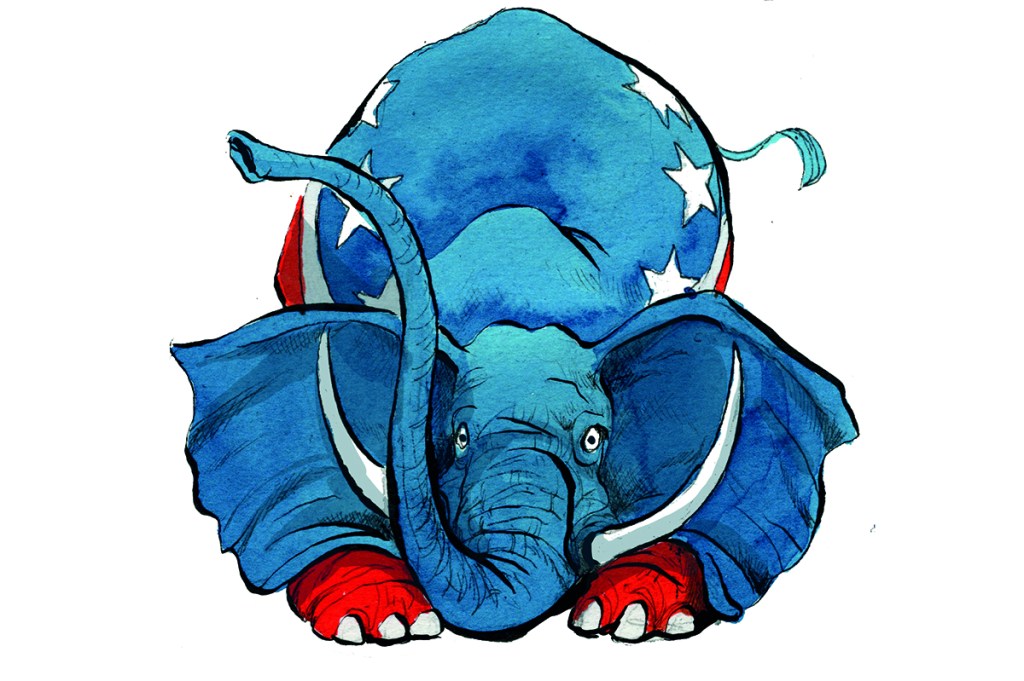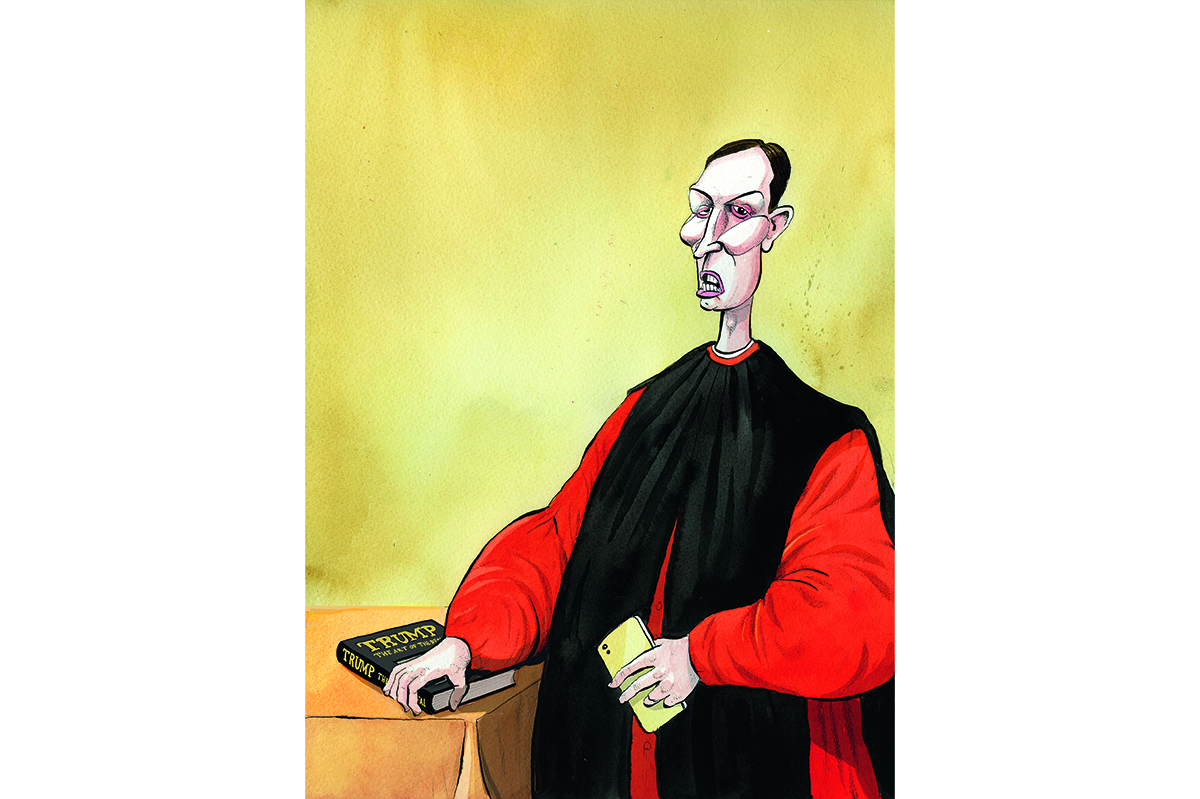The 2022 midterm elections consumed more than 16.5 billion real American dollars. They featured thousands of candidates and the most expensive Senate race in history, resulting in the election of Democrat John Fetterman from Pennsylvania. Millions of viewers across the country tuned in to watch election-night returns in anticipation of a promised red wave that never came. The 2022 midterms were the political equivalent of the Red Queen’s race — a massive effort, all to end up pretty much back where you started.
Post-election recriminations were complicated by how well Republicans actually did. They massively increased their turnout and won the House of Representatives. They saw wide margins of victory by incumbent governors in Florida, Georgia, Ohio and Texas. And the GOP’s growth among Hispanics continued to impress. According to Republican consultant Giancarlo Sopo, Democrats’ average margin with Hispanics in midterms between 1982 and 2018 was thirty-six points. As recently as 2018, they won Hispanics by forty points. In 2022, Republicans cut that in half, resulting in the Democrats’ worst midterm performance ever with Hispanics. And Republican gains among black voters, while small, could prove electorally significant. The problem, as pollster Patrick Ruffini sees it, is that this combined to create a map more resembling a presidential year than a midterm. Republicans failed to peel away enough white 2020 Biden voters to win the kind of suburban congressional seats critical to building a larger majority. And time and again, they were hampered in key states by poor statewide campaigns that hurt their down-ticket opportunities. For example, in Pennsylvania’s 17th district, the suburban Pittsburgh seat formerly held by moderate Democrat Conor Lamb, voters chose a progressive professor over a conservative county commissioner.
Pennsylvania Republicans placed much of the blame for this type of underperformance on the total absence of a campaign from Doug Mastriano, the Donald Trump-backed GOP gubernatorial candidate. Mastriano essentially gave up on fundraising and campaigning for the final months of the contest, instead posting Facebook memes and calling for “forty days of fasting and prayer” from his supporters. It was enough to get him just over 40 percent of the vote.
The flip side of that equation was true as well: an overperformance by congressman Lee Zeldin, who made soft-on-crime Democratic vulnerabilities central to his campaign for the governorship of New York, got him the most votes of any GOP candidate since Nelson Rockefeller. Along the way, he helped Republicans flip four New York House seats – which turned out to be crucial to the new majority. The takeaways for Republicans frustrated by their lackluster showing varied widely, but as is typical, few were inclined to examine their priors. The greatest disappointment was in the Senate, where a war of words between National Republican Senatorial Committee head Rick Scott and Senate Minority Leader Mitch McConnell resulted in an unprecedented challenge to McConnell’s leadership role (McConnell won easily). The expenditure blame game among losing-side consultants is nothing new, but it blew up into the actual Senate leadership more heatedly than usual because of the sheer number of outsider candidates running for statewide office for the first time. Many of them needed to call for backup from national groups or big donors to make up the fundraising gap; there was considerable disagreement about how these needs should be met.
One of the biggest donors, tech billionaire Peter Thiel, effectively went one for two in his attempts to send his ideological allies to the Senate, winning with Hillbilly Elegy author J.D. Vance in Ohio but losing with his own Zero to One co-author Blake Masters in Arizona. Both were backed with enormous sums of Thiel’s own money, but struggled to learn the hard skills of campaigning on the fly.
Much was made of “candidate quality” as the defining problem of 2022 — the phrase was often deployed as a euphemism by McConnell and others to refer to the populist outsiders and media-savvy combatants favored by Donald Trump and his allies. But a better measure, according to one former Republican governor, is candidate performance: “It matters less what you look like on paper than how you perform once you get on the field.”
Here, Trump’s negative influence was felt acutely. From the perspective of the corporate anti-Trump media, the villainy was his “election denial” — the fomenting of conspiracy theories about the tabulation process and the Covid-era early voting regimes now in place across the country. But while this certainly was a drag for many GOP candidates who dabbled in refusing to accept the results of elections, the more damaging lesson Trump may have taught potential candidates is that running for office is easy. It doesn’t matter if you build a campaign structure or have an experienced team, the idea goes — so long as you’re active on social media, blasting the “fake news” in viral moments, and speaking to big cheering crowds, you’re going to win.
Trump certainly won with this approach once, trouncing his slow-moving primary opponents in 2016. But consistently winning that way in general elections is hard, especially if you’re not a household name. Or running against Hillary Clinton. Many of the outsider candidates who tried “America First” as their watchword in 2022 learned this lesson the hard way. In Arizona, political newcomer Kari Lake — who previously donated to Barack Obama — turned her capabilities from years as a local news host to deploying the Trump playbook across the board. Her showdowns with the hostile media went viral constantly among conservatives, her at-home-studio filter was parodied on Saturday Night Live and her less-telegenic opponent Democrat Katie Hobbs refused to debate. Many Republican insiders hailed Lake as a rising star, potentially even a Trump vice-presidential choice for 2024.
Yet as early voting began, Lake’s closing act seemed more geared for her MAGA-hat audience than toward actually winning an election in a state where a third of voters are registered Independents. She denounced voters for John McCain (“get the hell out”) and was joined by polarizing big names from Trumpworld: Turning Point’s Charlie Kirk, Human Events’s Jack Posobiec and MyPillow’s Mike Lindell. When Steve Bannon rallied with her on stage in a glam-rustic barn in Queen Creek, Arizona, he spoke of Lake as ushering in a new era for the American right. Pointing to the media in the back of the room, he said: “They’re here from Berlin and Beijing and London and Tokyo, not just New York and LA and Washington, DC. The media is here from all over the world, you know why? Because they understand the future is here in Arizona!” The crowd cheered.
Four weeks later, Bannon was still insistent that Lake, trailing Hobbs by nearly 20,000 votes, could pull it out. “This stinks to high heaven, and everyone’s going to be held accountable for this,” Bannon said in an interview with Lake on his Real America’s Voice program. “They’ve disenfranchised the citizens of Arizona, and particularly they’ve disenfranchised the ‘deplorables’… You’re gonna win this.”
(She did not, in fact, win this.)
It’s unclear whether advocates of an America First approach to GOP politics will learn from these key losses, and even more uncertain if they want to be part of the Republican team or a thorn in the side of leadership. The anticipated speaker of the House, California’s Kevin McCarthy, will have to herd a fractious group in order to achieve any legislative aims — and he’ll have to do so with a new majority that is more centrist than expected thanks to victories in New York, California and other blue states. His problem may not be the Marjorie Taylor Greene-style members of his conference, but the blue- state moderates who could cut deals with the Democratic minority, where Nancy Pelosi is staying on as “speaker emeritus” to keep the youngsters in line.
The immediate effect of the disappointment of 2022 is to make the victors look even better, and no one was more victorious than Florida’s Ron DeSantis. Supporters of DeSantis are ebullient about his potential as a 2024 candidate for the presidency, with Trump’s Mar-a-Lago announcement of his own presidential run viewed as a weak follow-up to the stumbles of so many of his handpicked midterm candidates.
In 2016, Trump promised voters they’d get tired of winning. But at this point, Republicans are tired of losing. The question is how much they blame him for it.
This article was originally published in The Spectator’s January 2023 World edition.

























